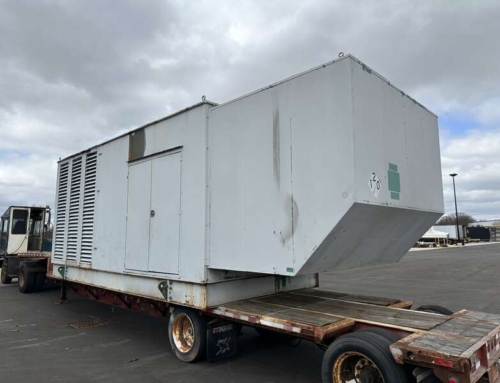Generators are the heart of your industry, and they are responsible for operations and smoothly running your business. Even though few are designed to run continuously and non-stop, their health is as important as that of humans. They require proper maintenance and checkup measures to ensure the generator’s long life and use during asset recovery.
Timely inspections and testing will obviously play a crucial role in the endeavor. But how to do that? Multiple generator tools exist for testing. Let’s learn about the available options.
Portable Meters
Three types of meters can be used for generator testing. They are elaborated as follows:
Multimeter
It is a commonly used tool that provides insights into the device’s electrical properties, such as current, voltage, and resistance. It helps to diagnose the open, ground or short circuits that can hinder the functionality. They can be in-built or externally used. Further, the older versions come with a needle movement scale type device, while newer versions and digital ones do.
Using the multimeter, however, requires knowledge for testing. To understand this, you must know how to test a generator with a multimeter, as current tests require the passage of wire through the diagnostic generator tools. Similarly, checking resistance also requires disconnection of conductors and coils, while voltage testing is possible without circuit isolation.
Mutlietes can also be coupled with accessories and adaptors to enhance functionality. It includes an inductive pick-up/external trigger, integrated temperature probe, and pressure vacuum module.
Megohmmeter
It is the insulation resistance tester, and the testing process is referred to as megger testing. The device circulates high-voltage low amperage through coil or wire and measures the resistance. The value over one mega ohm is fine; otherwise, there lies the need for the replacement of damaged or degraded stator winding insulation. New alternators need to be placed on the defective part.
Clamp-on Ammeter
These caliper ammeters or clamp meters are of two types: AC and DC clamp ammeters. The functionality of both differs considerably. The clamp meter uses soft iron jaws that surround the conductor to provide contactless testing. The AC clamp ammeter uses variation in the magnetic field that arises due to that change in load, while the DC uses the hall sensor effect to provide the results. The clamp-on ammeter also measures capacitance, voltage, continuity, resistance and other properties. It is also available in digital mode.
Advanced Diagnostic Tools
With the presence of a complex Programmable Logic Control (PLC) configuration and other critical, delicate and hard-to-reach parts, handheld meters aren’t sufficient for an in-depth generator diagnosis of the capabilities and functionalities. Hence, the advanced measures need to be taken, such as:
Generator Health Monitoring System
These systems allow remote monitoring by integrating with the generators. Continuous inspection and monitoring of the equipment provide timely insights into potential or suddenly occurring problems. The features help avert large-scale damage or issues to both the generator and field workers.
PULSAR Stator Core Testing Systems
Here, the stator core tests are done to check the condition of the rotors. The PULSAR offers an effective and safe approach to carry out the stator test. It is an alternative to the ELCID and HVRF testing methods that pose safety hazards and are longer in duration.
Robotic Inspections
It is the more advanced method of inspection that offers quick and accurate results. It helps gain actual insights as the probes and robots can be inserted into the area of concern. The robotic inspections are fruitful in identifying issues with core packets and corrosion on wings, stators and other parts.
Revive Your Generator With Generator Testing
Regardless of the results you obtain from generator testing, you are reading the article at the right place. If your generator is working fine, it is recommended that the diagnosis be regularly repeated after a certain interval of time. However, if you encounter any issues, there is no need to bother. Your operations won’t halt for long. At CSDiesel Generators, we deal with everything from generator parts and accessories to new generators. Communicate your requirements to us and gain swift delivery to ensure seamless operations.
Common Questions About Generator Testing
Q1. What are smart generators?
These are user-friendly generators that offer insights into the health of the generators themselves. They are capable of identifying issues and warning users in a timely manner to ensure repair services are implemented quickly. It prevents further or deep damage to the generator. The smart generators also provide information like RPMs, coolant level, fuel consumption and level and other important details.
Q2. What is the recommended frequency of generator testing?
As per the National Fire Protection Agency, the monthly testing is recommended to be performed under available load. The testing should be done for thirty minutes and must pass the criteria set by the agency.
Q3. What are the best practices to use a generator?
Timely testing, maintenance activities like clearing air and oil filters, cleaning cooling fins, and basic inspections to identify the onset of any issues are recommended to be performed regularly.
Q4. Can you test surge arresters?
Yes, diagnostic devices and methods exist to test surge arresters.
Q5. Why perform generator testing?
Generator testing is necessary to ensure the safe, efficient, smooth and continuous operation of the generator. Routine testing helps to prevent the occurrence of issues, subsequently minimizing the downtime faced in such situations.
Q6. What is the maximum runtime for generators?
While it varies among the types of generators, generally, portable generators can run up to 2,000 total hours.
Q7. Which industries does the CSDiesel generator serve?
We offer our services to many types of industries, such as hospitals, construction, mining, commercial, hotels, and data centers.
Q8. How do we know if the generator needs quick service?
Suppose the generator functions differently from normal or shows symptoms like visible signs of damage, set-up delays, a strange smell or noise or other issues. In that case, the generator certainly needs instant inspection and service.








